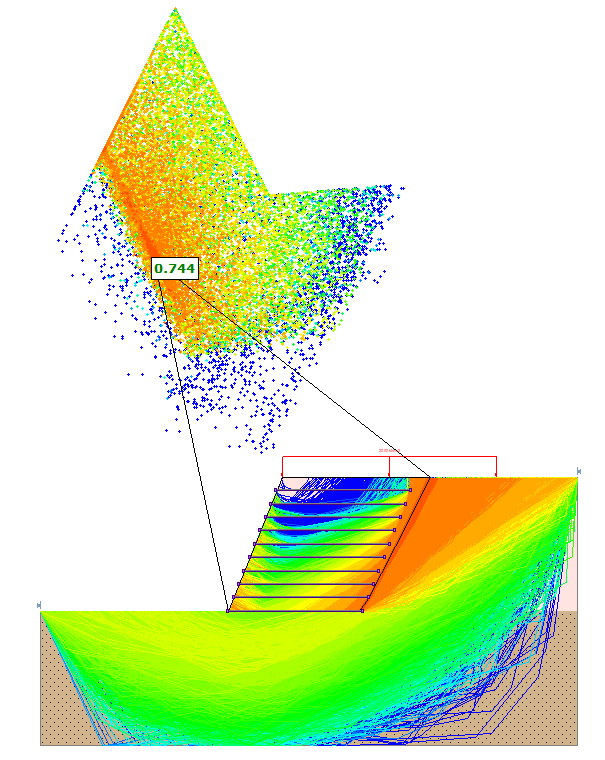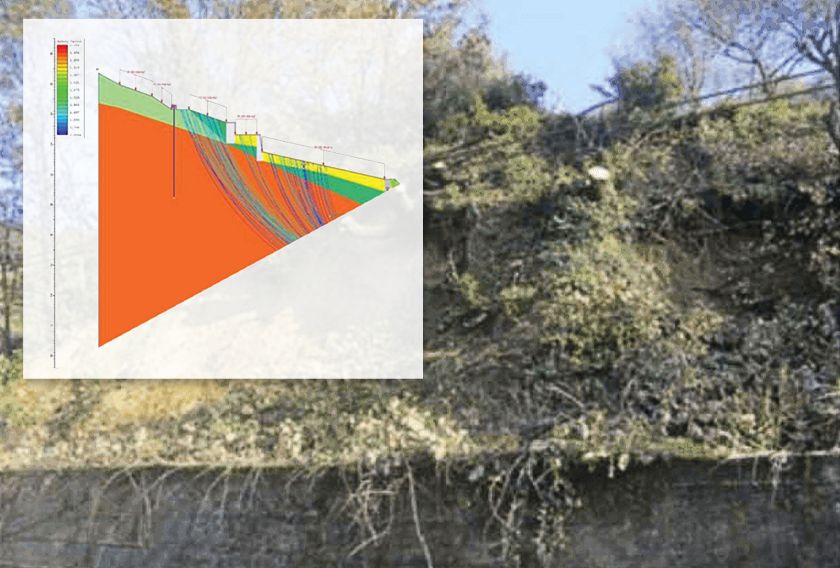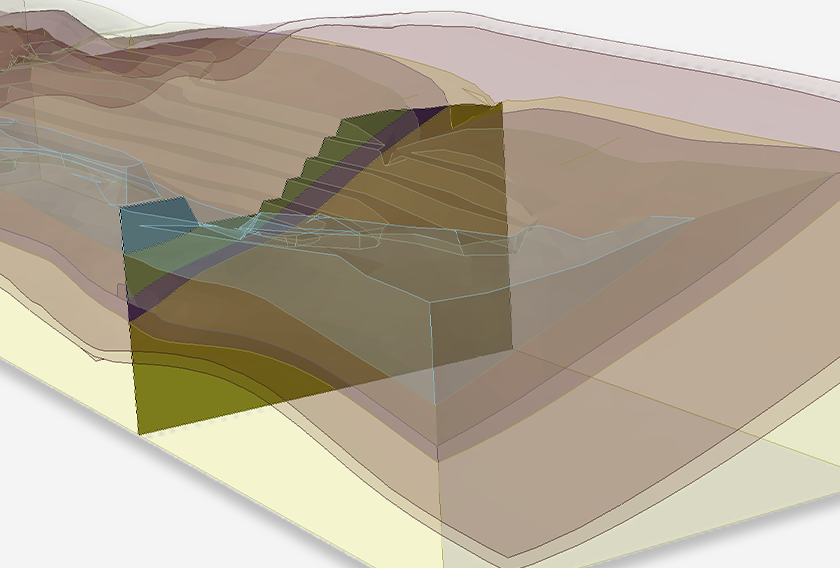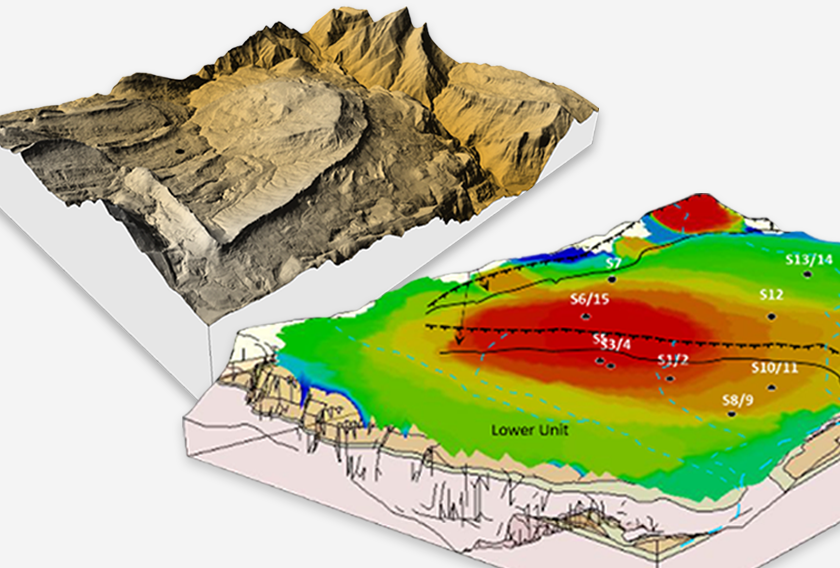Efficient Weak Layer Handling with Slide2
- Sina Javankhoshdel, Senior Manager - LEM
Slope stability analysis is inherently complex, and the role of weak layers in shaping slip surfaces adds an extra layer of intricacy. Slide2 introduces the Heuristic Weak Layer Handling method, offering you enhanced options to refine your search capabilities. Surfaces that have been cut by a weak layer will adopt the material properties of the weak layer at the cutting location.
There are instances where a weak layer may not necessarily reduce the factor of safety when it cuts a slip surface, as illustrated in the example below.
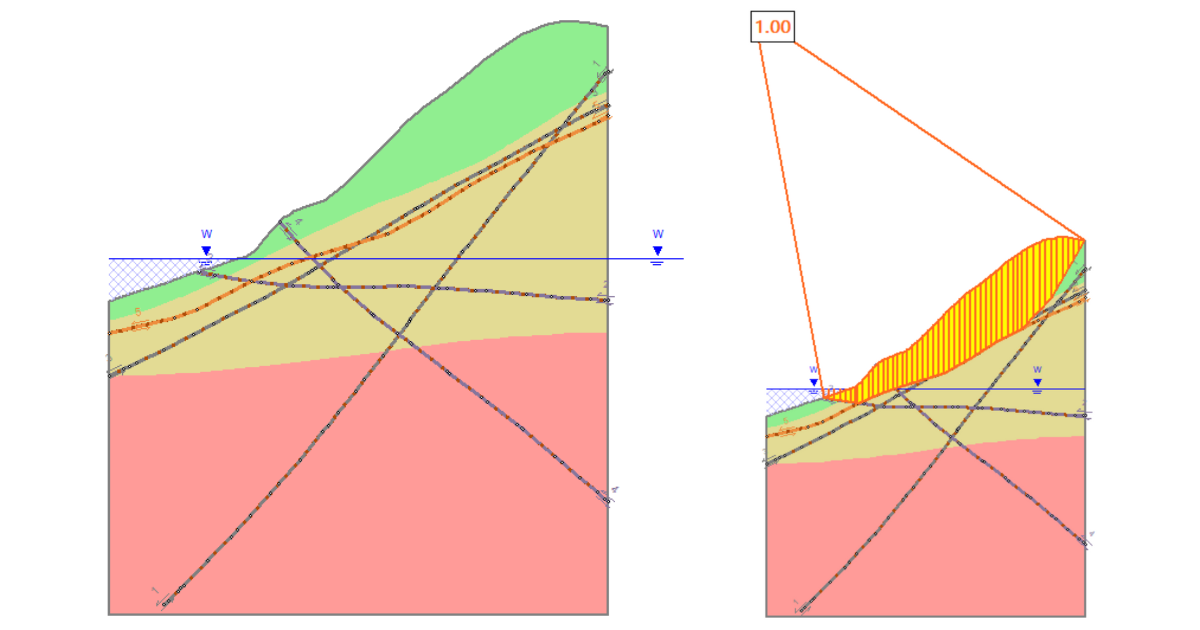
The above models sequentially show the slope with five weak layers, the critical slip surface (which only follows three of the weak layers - (1, 2 and 3), and an envelope of all the factors of safety generated by slip surfaces traversing the weak layers.
When a model contains many weak layers (for instance, when considering sliding along layers of geosynthetics, as discussed in the next section), the search process must consider many cases of weak layers, traditionally resulting in slow computational times.
Earlier this year, in Slide3, we developed the Heuristic Weak Layer Handling method, enabling the search to more adaptively consider the combinations of weak layers that tend to produce lower factors of safety. It worked well, so we implemented the same approach in the most recent release of Slide2, (version 9.030).
This significantly improves the computation speed while maintaining the relative accuracy and reliability of the search result.
The new option is accessible via Surface Options > Weak Layer Handling. It is compatible with Particle Swarm Optimization and can be activated if at least one weak layer is present in the model.
Geosynthetic Weak Layer Sliding
In practice, it is often important to consider not only overall slope stability, but also the potential for sliding along the top surface of a geosynthetic layer.
In combination with the heuristic weak layer handling feature, is it now possible to automatically account for this failure mode by having Slide2 recognize the geosynthetic supports as weak layers.
To implement this, navigate to the Support Properties, define your geosynthetic support type and then select Pullout and Stripping > Consider Sliding Along Interface > Yes. Slide2 will automatically treat the geosynthetic elements in the model with this support type as additional weak layers in the analysis.
During this process, if there are many geosynthetic layers, consider using the Particle Swarm Optimization with Heuristic Weak Layer Handling to expedite the search process.
